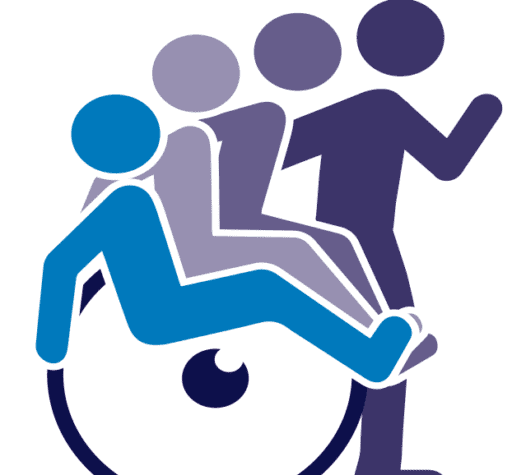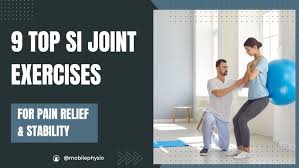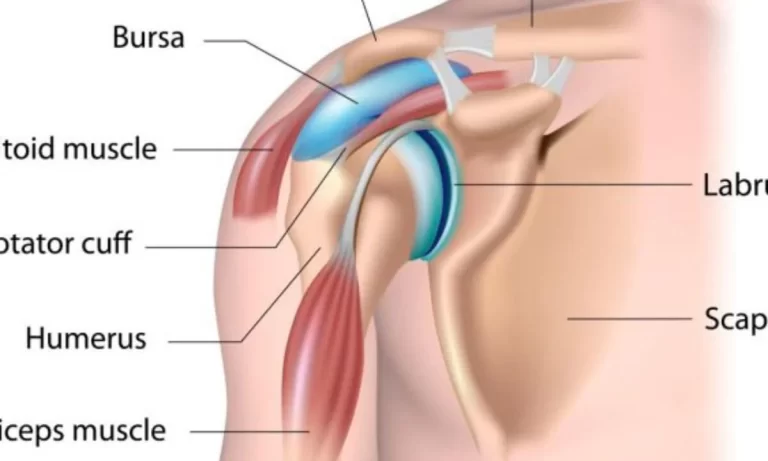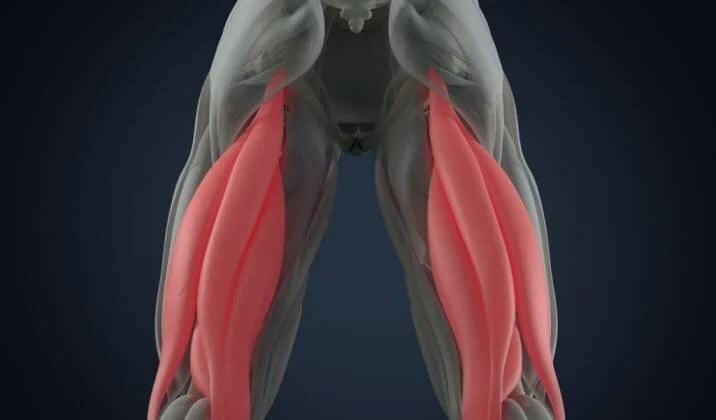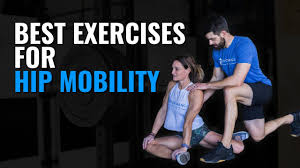9 Best Exercises to Stop SI Joint Pain Fast
Table of Contents
Introduction:
Pain in the sacroiliac (SI) joints can make everyday activities, including walking, sitting, and bending, difficult. Inflammation, muscular imbalance, or incorrect SI joint alignment are the most common causes of this pain.
The good news is that by increasing flexibility, lowering muscular tension, and strengthening joints, some activities can help ease chronic pain. The top 9 exercises to quickly relieve SI joint pain, regain range of motion, and promote pelvic and lower back health will be covered in this book.
Benefits of the Best 9 Exercises for Immediate Relief from SI Joint Pain:
The top 9 SI joint pain exercises offer several advantages that address both immediate pain and long-term joint stability. The sacroiliac joint is less stressed thanks to these exercises, which also serve to improve pelvic and spinal alignment and relax tight muscles.
To stabilize the pelvis and stop further flare-ups, they also strengthen the hip, glute, and core muscles. Frequent practice reduces pain more quickly by increasing circulation, improving flexibility, and relaxing tense muscles around the hips and lower back.
All things considered, these exercises not only reduce pain but also enhance posture, mobility, and day-to-day functional tasks, guaranteeing more control over the health of SI joints.
9 Best Exercises to Stop SI Joint Pain Video
The Top 9 Exercises to Quickly Reduce SI Joint Pain:
Knee-to-Chest Stretch:
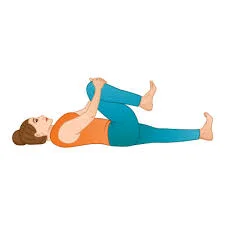
Using both hands, slowly raise one knee toward your chest while maintaining the other leg straight on the ground. This stretch is particularly helpful for those who have back pain or stiffness because it relieves pressure on the lower back, lengthens tense muscles, and encourages relaxation.
Piriformis Stretch:
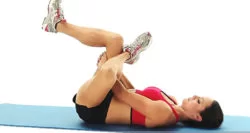
The Piriformis Stretch is a useful exercise for relieving piriformis muscle tension, which can occasionally put pressure on the sciatic nerve and result in lower back, buttock, or leg pain. Pull the lower knee gently toward your chest until the crossed leg’s hip and buttocks start to stretch. This stretch eases sciatic pain, increases hip mobility, and relieves tension.
Child’s Pose:
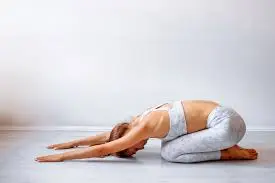
To perform it, place your big toes in contact while kneeling on the floor with your legs apart. This posture is particularly helpful for treating back pain and lowering stress since it promotes relaxation and flexibility while relieving tension in the hips, shoulders, and back.
Cat-Cow Stretch:
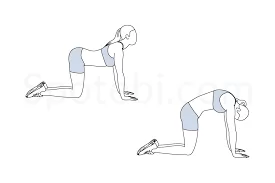
The Cat-Cow Stretch is a soft, flowing exercise that helps with posture, back stress, and spinal flexibility. To achieve the “Cat” posture, exhale as you circle your spine, tuck your chin into your chest, and pull your belly button in toward your spine. For five to ten breaths, keep switching between these postures gently.
Bridge Pose:
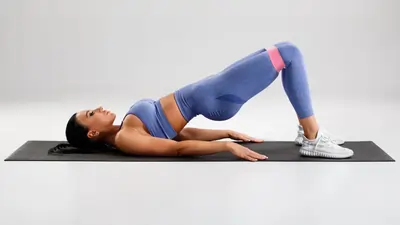
The Bridge Pose is a stretching and strengthening exercise that opens the chest and hips and works the lower back, glutes, hamstrings, and core. It is performed by lying flat on your back with your arms at your sides, palms down, knees bent, and feet hip-width apart.
To create a straight line from your shoulders to your knees, raise your hips upward while firmly pressing your feet into the ground. In addition to improving general posture and flexibility, this pose helps decrease lower back pain and increase spinal stability.
Bird Dog Exercise:
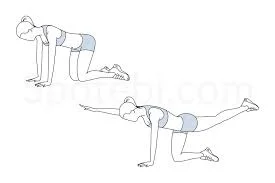
Targeting the lower back, abdominals, and glutes, the Bird Dog Exercise enhances posture and balance while strengthening the core. As you begin the exercise, place your wrists behind your shoulders and your knees behind your hips in a tabletop position. Hold while using your core for a few seconds, then swap sides and go back to the beginning position. On each side, repeat many times.
Clamshells:
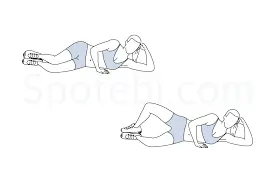
Clamshells are a straightforward yet powerful exercise that improves balance and lessens hip or lower back pain by strengthening the hip abductors, glutes, and pelvic stabilizing muscles. Without turning your hips or back, steadily raise your upper knee upward as though opening a clamshell while maintaining your feet touching.
After a few repetitions, swap sides and controllably lower the knee back down. This exercise promotes healthy alignment, enhances hip stability, and guards against injury.
Plank on Knee:
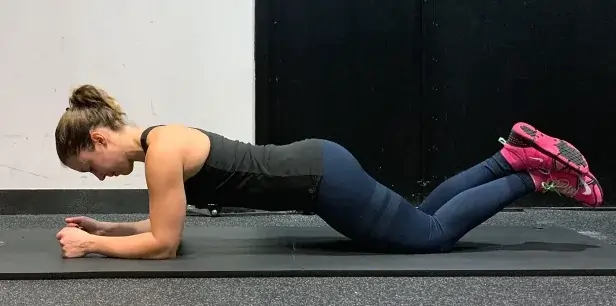
A more accessible version of the classic plank, the Plank on Knee improves the back, shoulders, and core while putting less effort on the lower body. Maintaining a firm core and a flat back, extend your body until your head, shoulders, hips, and knees create a straight line.
Breathe steadily for 15 to 30 seconds while holding the posture, and then let go. This modified plank enhances posture, strengthens the core, and gets the body ready for a full plank.
Wall Squats:
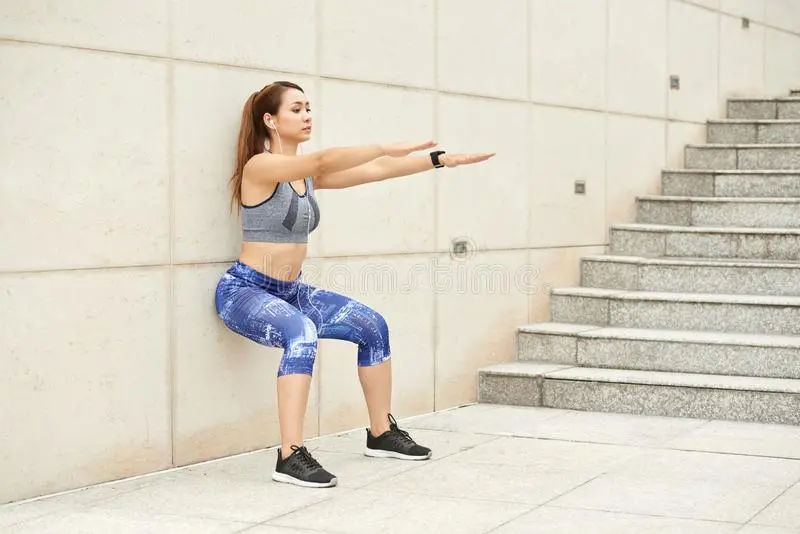
Exercises that develop the quadriceps, glutes, and hamstrings while simultaneously using the core for stability are called wall squats. Breathe steadily for 20 to 60 seconds while maintaining this seated position, then get back up. Wall squats promote greater knee and hip stability, increase leg strength, and increase endurance.
Conclusion:
In conclusion, by lowering stiffness, increasing flexibility, and fortifying the supporting muscles in the lower back and hips, these nine exercises are very successful in easing SI joint pain. They aid in regaining joint stability, reducing pain, and developing improved posture and mobility when done consistently and correctly.
By incorporating these motions into your daily routine, you may stay active and pain-free while also receiving immediate relief and preventing future flare-ups.
FAQs
Stretching, stabilization exercises, and pelvic and spinal adjustments are typically used in conjunction for treatment. Reducing inflammation, regaining joint function, and avoiding flare-ups are the long-term objectives.
SI joint dysfunction can have a major negative influence on a person’s quality of life if treatment is not received, making it challenging to carry out everyday duties and engage in physical activities. Nonetheless, the majority of people may get symptom alleviation and return to their regular activities with the right care.
Thin needles are inserted into trigger points in the muscles around the SI joint during the minimally invasive treatment known as “dry needling,” which is carried out by qualified medical professionals.
SI joint dysfunction can cause the following symptoms: lower back pain that doesn’t go away, either on one side or on both sides.
References:
- Hip thrust. (n.d.). [Video]. Hingehealth. https://en-gb.hingehealth.com/resources/articles/si-joint-pain-exercises/
- Debutify. (2025, April 16). 9 Best SI joint exercises for quick pain relief. Back Muscle Solutions. https://backmusclesolutions.com/blogs/the-ql-blawg/si-joint-exercises?srsltid=AfmBOoriDWhs18-359JMfZX8WS84AJpCq1UsGe_pacK5tZ0q3ZONY6_Y
- Alleviate_Admin. (2025, July 10). Sacroiliac Joint Pain Exercises & Stretches For Relief. Alleviate Pain Clinic. https://www.alleviatepainclinic.com/blog/sacroiliac-joint-pain-exercises/
- Sacroiliac Joint Pain Exercises & stretches for relief. (n.d.). https://www.romanomd.com/blog/sacroiliac-joint-pain-exercises–stretches-for-relief-20341.html
- Wasilisin, M. (2025, April 17). 10 exercises to relieve sacroiliac joint pain. MoveU. https://moveu.com/blogs/news/10-exercises-to-relieve-sacroiliac-joint-pain?srsltid=AfmBOophtZ0675k64lfWMk-6qM_X5XtZ65HHZwEFn8sFmAU24nYqosxb
